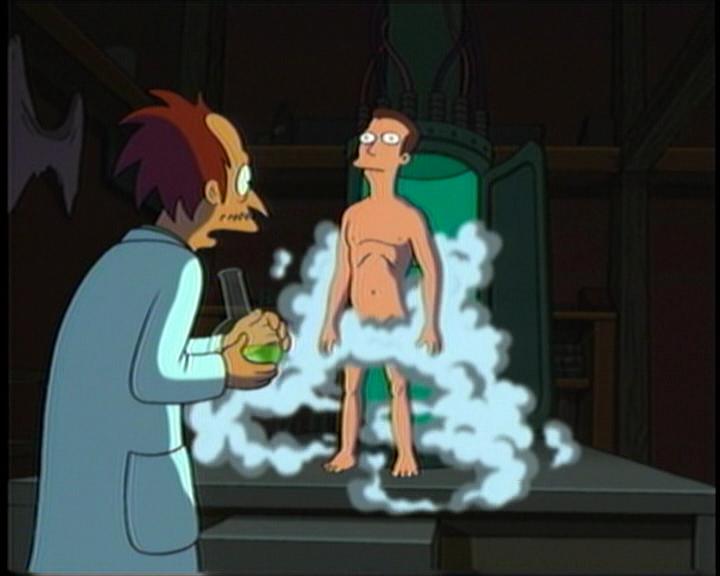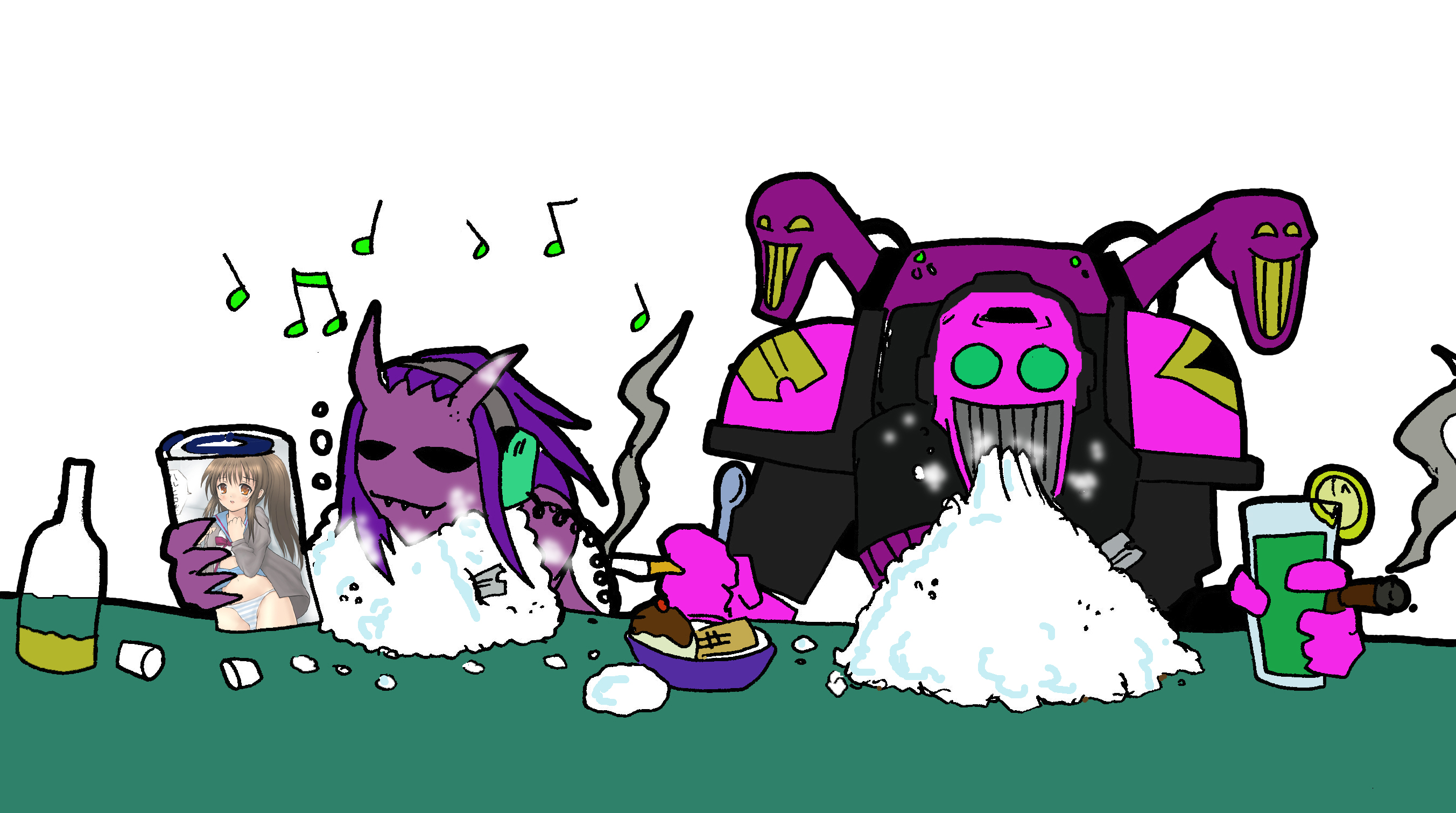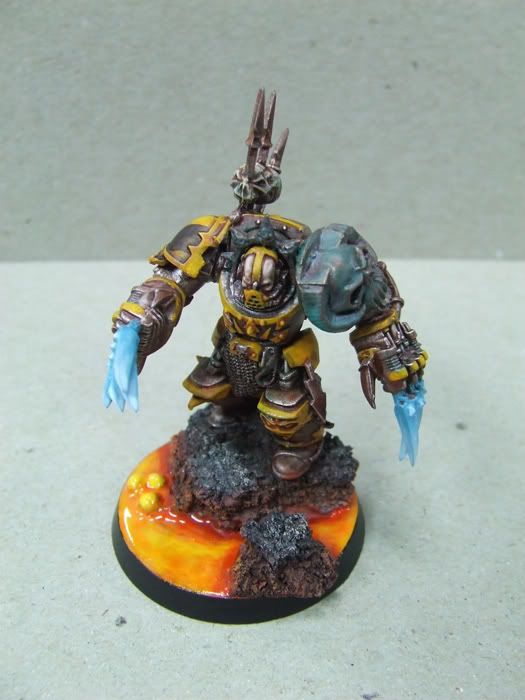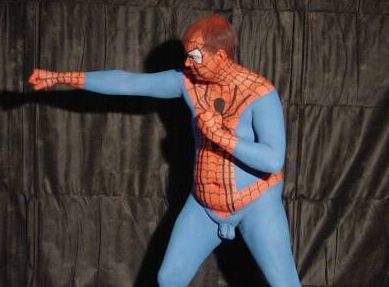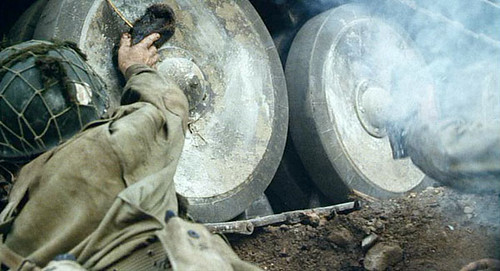I Got some help requests from
yesterday's Tutorial Tuesday. As always, I am more than happy to help. Its one of the great things about the painting/modeling side of the hobby - people are actually willing to listen to the advice they were actively looking for. None of this "what do you think of my list but I really just want validation" crap.
Anonymous and Orange both had some questions about the color purple - anonymous just wants a recipe and orange wants help with a
Thrullg. Wall of text coming your way!
Advice dog is here to help
I'll deal solely with the color itself before I jump into the Thrullg's tentacley embrace.
Purple is one of those colors that a lot of people have issues with. Like red and yellow, it can be tricky to do right. Unfortunately, purple suffers from all of the problems commonly associated with red and yellow.
- Availability of premade shades of purple - between the Citadel and P3 paints, there are a whopping 4 shades of what I would call purple - keep in mind that those ranges add up to something like over 150 paint colors. Ouch. Reaper has a ton of purples, but they aren't the most easily found brand.
- Purple has a nasty tendency to be a weak pigment - not nearly as bad as yellow, but you will still need more coats of paint than you probably want.
- Its hard to highlight purple with out running into the whole pastel colors issue. You have to be pretty careful with just adding white and hoping for the best.
So, how to sidestep these issues or at least try to?
As far as finding pre-made colors goes - you have to either deal with the fact that you can only get your hands on a select few shades or you can bite the bullet and order some of the harder to find stuff.
Reaper Master Series paints are a good place to start due to the wide range of colors available. That's pretty much it. You can always mix your own, but then you run into the problem of consistency of color.
As far as good base coverage goes, the only solution here is hard work. I notice this a lot with the weaker pigments - its real easy to slip into an over-thick coat of paint complete with a lumpy surface and noticeable brush strokes (I call this 'artifacting'). The only way to deal with this is to be prepared to use multiple thin layers. Which is something you need to be aware of anyway.* Its just a matter of thinning the purple down a bit and doing multiple coats - making sure each coat is dry before the next one goes on (a hairdryer on low helps immensely with this). Sometimes one or two will do, for others it may be 4 or even more. But that's just the way things are. If you're in a hurry, then you can use the Citadel Foundation purple as a first layer and then layer other shades on top of that.
Highlighting purple is the real bear. Purple turns all pastel the more white you add to it and there aren't that many commonly available shades to work with outside of that. Its a conundrum. Plus, as a secondary color, purple has a distinct tendency to stray towards red or blue. You gotta be careful when you're using one lighter shade to highlight a darker one. Warlock purple and liche purple are very different colors. If you wanted a blueish shade, be very careful with that warlock purple.
The easy way: if your a Citadel paint user, get all three of the purples (liche, warlock and hormagaunt). This will give you a solid pair of blueish purples to work with and a nice reddish one. You can use the darker one as a base (adding black to shade) and then use the lighter shades to highlight (being careful with adding white for extreme highlighting). Just keep in mind how close to magenta Warlock purple is. Its real easy for it to take over the tone. For bonus points you can track down the P3 purple and throw that in the mix. The only real downside is that ALL your purples will look alike - you won't have a lot of variation since you have so few shades. Be aware that the purple wash just sometime wont be dark enough to matter. Especially on top of the Liche purple.
The expensive way: track down some of the Reaper Master Series paints. They often come in these pre-matched trios that make it super easy to find matching tones. The sheer number of extra purples you can find will really open up color and shade options for you. You may not have to do as much (if any at all) mixing of midtones, shadows and highlights. Same advice as above - thin coats and careful color matching. Be aware that the Reaper paints dry to an extremely flat finish (your sealant will solve that problem, though).
Highlighting bonus tip: Don't be afraid to use a blue gray (along the lines of Space Wolve gray or Trollblood highlight) to mix highlights for a blue-purple. It can obviously end up a bit drab, but you'll sidestep the pastel issue a bit and get a cool effect to boot. As far as red purples go, a pink or even a pinkish flesh color can also work. A bone color added to either would also be worth experimenting with to see how you like it.
To recap: a good purple needs a solid base coat and highlighting scheme that doesn't make it look like your model is ready for Easter Sunday. Multiple thin coats and judicious use of white as a highlight are key.
Now, on to the Thrullg
First up, one thing you can always do is hit up the PP forums and see if they still have an 'ask the studio' thread and ask your question there.
However, if you've ever seen one of the GW master class articles or virtually any PP how-to, you'll notice that the studio painters very rarely use a color straight out of the pot. Their base coats are almost always some 2+ color mixture and, overall, their schemes are always complicated. For the purposes of this section, I'm probably going to have to dip into that a bit but I'll try to keep it in terms of what you're likely familiar with.
General Notes: Be prepared for a lot of layers. Since this is a mono color monster, a good, even base coat is going to be key. It will make or break the paint job.
It looks like the scheme goes to ways blue to gray and blue to red. the base coat is obviously a a blue purple that then transitions to a redish color. In other areas, the base coat fades to a blue gray. Both of these are relatively easy to achieve.
Base coat - Pick a nice dark blueish-purple. Liche purple would be my guess. Be sure to thin your paints a bit and do as many coats as it takes to get smooth, even coverage. Balck or white primer would both work. If you have both, do a test on something other than the thrullg to see which one purple covers better.
Easy Shading - on another model, do a test to see if the purple wash is dark enough to matter over the Liche purple. If not, add a touch of baddab black to it and try again. The key with adding the black is to make it darker without making it too drab. since we're going to be highlighting up so much, you wont have to add too much black. I think a 25/75 black/purple mix is a good place to start.
base coat some more - Touch up your base coat. Layer more liche purple leving the black wash visible in the crevasses. Then begin layering up to a pure hormagaunt purple. make sure that at least some Liche purple is still visible. This means mixing lots of intermediate shades between the two colors. be careful with the foundation paint as its pigments can take over really quickly. The key with layering is to not cover up ALL of the previous layer.
Build up the gray - Troll Blood Highlight is my weapon of choice here. If you don't have it, either fortress gray or space wolves gray are good subs (mix some experiments with the purple and see which one you like better). Using multiple thin layers, build up a gradient from the hormagaunt purple to a about a 50/50 mix on the areas you want gray. The keys to this are, again, thin layers, and patience. Smooth coats are also going to be important to this transition.
Finishing the gray - Use a wash of Shadow gray very sparingly in the shadow areas - this is NOT the kind of thing where you slather the whole area with the wash - JUST THE SHADOWS. Use a very thin wash and use multiple layers for best results. Do a couple of quick highlights with a mix of the purple/gray color. These should be much closer to pure gray than when you were creating the gradient. Do some very sparing extreme highlights with pure gray. For best results on the tentacles suckers, use simple line highlighting and go straight to pure gray.
Finishing the purple - begin doing your highlighting by mixing warlock purple into the hormogaunt. Paint a smaller and smaller area with each mix (same as above). Leave plenty of the blueish purple showing to maintain the effect you want. Do some extreme highlights with pure warlock purple and a few (not hardly any at all) areas with a touch of white mixed in. The various bands and banding lines on the muscles on the model are good places for the last highlights.
Note: use a fairly fine brush for all your extreme highlighting.
Note 2: When thinning your paints, the GW stuff does pretty well with just regular old water. For our purposes, just a little bit will do you though for everything but the wash. Also, if you see the paint separating, stir it back together.
And that's really it. the rest is just easy details. Though I would recommend painting the claws and the mouth black before you paint the details to make them stand out better.
Also, please snap some pics of the model when its done. I'd love to see it.
If you two guys (or anyone for that matter) have any questions on any part of this post, please feel free to contact me. Either in the comments (I have email notifications set up) or email me directly. I may not be a Mike McVey, but I'm happy to share the knowledge and experience I have.
------[Foot Note]--------------------------
*Not saying you have to use this technique or even that your wrong if you're not, its just best practice. But best practice is not always useful depending on your own situation.




